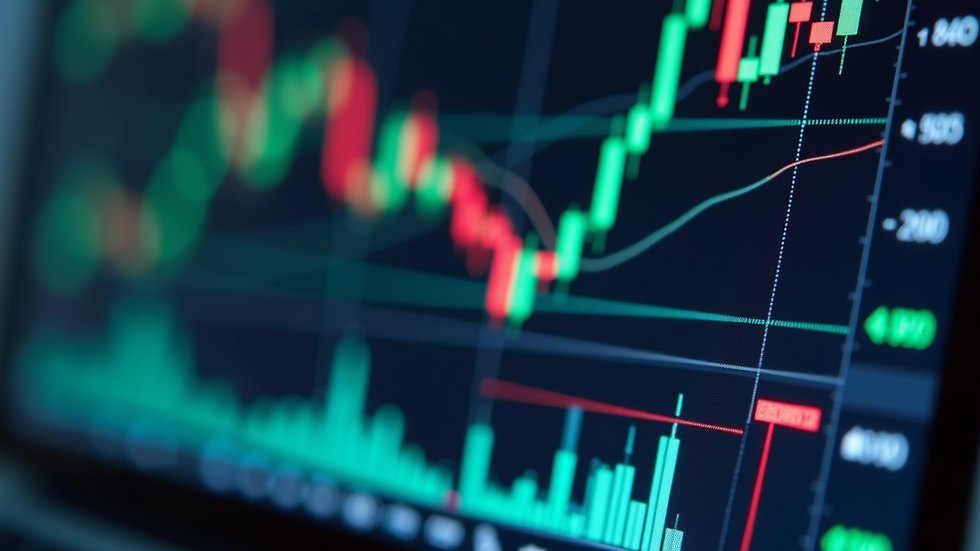Automated Trading vs Manual Trading: Which One Should You Choose?
- forex368

- Jul 11
- 3 min read
In the world of financial markets, two prominent trading strategies have emerged: automated trading and manual trading. Both approaches have their unique features, benefits, and challenges.
In this blog post, we delve into the details of each strategy, helping you make an informed decision about which one suits your trading goals.

What is Automated Trading and Manual Trading?
To understand the differences between these two strategies, let’s first break them down into their basic concepts.
Automated Trading
Automated trading uses pre-programmed algorithms to decide when to buy or sell assets based on predefined conditions. These algorithms are designed by traders, programmers, or ‘quants’ and execute trades automatically when the specified parameters are met.
Example: A Forex trader may hire a programmer to automate their intraday trading strategy. After testing and optimizing the system on demo accounts, they may deploy it on a live account, gradually increasing the investment size.
Manual Trading
Manual trading involves making decisions about buying or selling assets based on market analysis and executing trades manually. Traders monitor markets, analyze opportunities, and execute orders themselves.
Example: An intraday Forex trader might review currency pairs each morning, look for technical signals using indicators, and place orders manually based on their analysis and market insights.
Pros and Cons of Automated Trading and Manual Trading
Your choice of trading strategy depends on factors like expertise, time availability, finances, and personal preferences. Below are the key pros and cons of each approach.
Automated Trading
Pros:
24/7 Monitoring: Automated systems don’t miss trades or succumb to emotional decisions. They follow predefined rules consistently.
Data Processing Speed: Algorithms can process vast amounts of data and execute trades faster than humans.
Simultaneous Trading: Automated systems can manage multiple assets at the same time, reducing the risk of missed opportunities.
Custom Indicators: You can integrate additional market signals to refine your strategy.
Cons:
Past Performance Doesn’t Guarantee Future Results: Algorithms are based on historical data, which might not align with future market conditions.
Over-Optimization Risk: Excessive tweaking of parameters can make systems too specific to past data, reducing their effectiveness in live markets.
Cost: Hiring programmers or learning to code can be expensive and time-intensive.
Manual Trading
Pros:
Direct Control: Traders have full control over every trade and can adapt quickly to market conditions.
Market Insight: Manual traders can consider external factors, such as news or geopolitical events, to anticipate market reactions.
Flexibility: Traders can adjust strategies on the fly based on new information or market shifts.

Cons:
Limited Capacity: Humans can only monitor a few trades and indicators at a time.
Time-Consuming: Analyzing markets and executing trades manually requires significant time and effort.
Missed Opportunities: Unlike automated systems, manual traders may miss trades due to human limitations or fatigue.
Key Differences Between Automated and Manual Trading
Speed and Accuracy
Automated trading is faster and more accurate. Algorithms can execute hundreds of trades simultaneously, a feat impossible for manual traders.
Flexibility and Customization
Automated systems are customizable before deployment but rigid during operation. Manual trading, on the other hand, allows real-time adjustments and personalized strategies.
Risk Management
Automated trading adheres strictly to predefined rules, reducing emotional biases. Manual traders, however, can incorporate qualitative factors and adapt to unexpected events.
Potential Returns
While automated trading offers higher scalability and efficiency, manual trading may yield higher returns for experienced traders who can capitalize on nuanced market movements.
Backtesting and Optimization
Automated trading allows rigorous backtesting and optimization against historical data. While manual backtesting is possible, it is far more time-consuming and subjective.
Conclusion: Which Should You Choose?
The answer depends on your circumstances and preferences. Automated trading excels in speed, consistency, and scalability, making it ideal for new traders or those with limited time.
However, manual trading offers adaptability and deeper market insights, which are crucial for seasoned traders who prefer hands-on control.
Experience counts. While automated trading systems are effective, remember that you are ultimately at the hands of the robots. If you are a trader with the expertise and time to analyze the markets, manual trading may be the best fit for you.
But have you considered copy trading?
Copy trading combines the best of both worlds, allowing you to replicate the strategies of seasoned traders while reducing your workload.
Contact us today, and we’ll help you find the perfect trading solution.
Disclaimer: Trading in Forex and CFDs involves significant risk. Always conduct thorough research and seek professional advice before investing.




